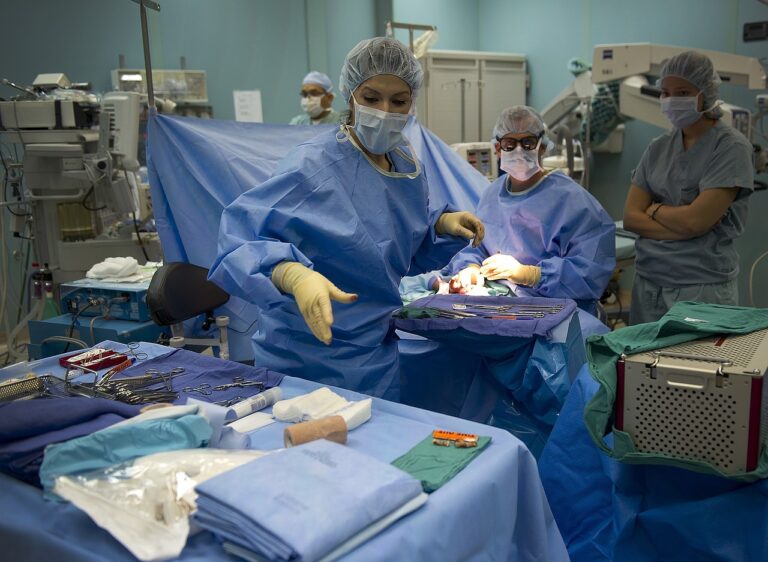Book Appointment Now

Evidence-Based Clinical Intervention in Umbilical Hernia
Umbilical hernias, a condition where abdominal contents protrude through a weak spot in the abdominal wall near the navel, affect both pediatric and adult populations. This condition often requires evidence-based clinical interventions to ensure effective treatment and prevent complications. In modern healthcare, the success of organizational work and patient outcomes in treating conditions like umbilical hernias is significantly influenced by the qualifications and expertise of medical professionals. This paper explores evidence-based interventions for umbilical hernia management, emphasizing the role of clinical expertise and patient-centered care in achieving optimal outcomes.
Get a custom paper help about evidence-based interventions for umbilical hernia management
Order Custom Nursing Paper
Overview of Umbilical Hernia
Umbilical hernias occur when a portion of the intestine or fatty tissue pushes through an opening in the abdominal muscles at the umbilicus. While common in infants, where the condition often resolves spontaneously, umbilical hernias in adults typically require surgical intervention due to the risk of incarceration or strangulation (Towfigh et al., 2013). The primary clinical goals are to repair the defect, alleviate symptoms, and prevent recurrence.
Evidence-Based Interventions for Umbilical Hernia
Effective management of umbilical hernias relies on evidence-based practices tailored to patient needs and the severity of the condition.
1. Watchful Waiting
In pediatric patients, particularly infants under two years, evidence supports watchful waiting as a first-line approach. Most umbilical hernias in this population close naturally as the abdominal wall strengthens (Hall et al., 2018). However, regular monitoring is essential to detect signs of complications like incarceration or growth of the hernia.
2. Surgical Repair
For adults and children with symptomatic, incarcerated, or large hernias, surgical intervention is the recommended treatment. Evidence-based surgical options include:
- Open Hernia Repair: This traditional approach involves making an incision near the hernia site to repair the defect with sutures or mesh. Studies suggest that using mesh reinforcement reduces recurrence rates, particularly in larger hernias (Henriksen et al., 2020).
- Laparoscopic Hernia Repair: This minimally invasive technique offers advantages such as reduced postoperative pain, quicker recovery times, and lower infection rates compared to open surgery. It is particularly effective for recurrent or bilateral hernias (Misra et al., 2020).
3. Mesh Reinforcement
The use of synthetic or biologic mesh during surgical repair is supported by evidence as a strategy to strengthen the abdominal wall and prevent recurrence. Mesh is especially beneficial for patients with risk factors such as obesity or previous abdominal surgeries (Deerenberg et al., 2015).
4. Postoperative Care and Rehabilitation
Evidence-based postoperative care includes pain management, wound care, and early mobilization to reduce complications such as infections or venous thromboembolism. Patients are also educated on lifestyle modifications, such as weight management and avoiding heavy lifting, to prevent recurrence.
Role of Clinical Expertise in Evidence-Based Interventions
The success of interventions for umbilical hernias heavily depends on the qualifications and decision-making skills of healthcare professionals.
- Assessment and Diagnosis: Clinicians must accurately assess the size, symptoms, and risks associated with the hernia to determine the appropriate intervention. This includes using imaging techniques like ultrasound or CT scans for complex cases (Henriksen et al., 2020).
- Surgical Skill and Technique: The surgeon’s expertise in performing open or laparoscopic hernia repairs significantly influences outcomes. Surgeons trained in minimally invasive techniques, for instance, achieve lower complication rates and faster recoveries (Misra et al., 2020).
- Patient-Centered Care: Incorporating patient preferences into decision-making ensures that interventions align with their needs and lifestyle. For example, some patients may prioritize quicker recovery times, making laparoscopic surgery a preferred option.
- Interdisciplinary Collaboration: Successful treatment involves coordination among surgeons, anesthesiologists, nurses, and rehabilitation specialists to deliver comprehensive, evidence-based care.
Challenges in Implementing Evidence-Based Interventions
Despite the availability of evidence-based strategies, challenges remain in their implementation:
- Resource Limitations: Access to advanced surgical techniques and mesh materials may be constrained in resource-limited settings.
- Patient Compliance: Adherence to postoperative instructions, such as lifestyle modifications, is critical but often inconsistent.
- Training and Expertise: Ensuring that all healthcare providers are trained in the latest evidence-based techniques is essential for optimal outcomes.
Conclusion
Evidence-Based Clinical Intervention in Umbilical Hernia highlights the importance of integrating research, clinical expertise, and patient-centered care in managing this condition. From watchful waiting in pediatric cases to advanced surgical techniques in adults, evidence-based practices offer effective solutions for improving outcomes and preventing complications. However, overcoming challenges such as resource limitations and ensuring healthcare provider training is essential for the widespread adoption of these interventions. By prioritizing evidence-based approaches, healthcare professionals can deliver high-quality care that meets the needs of patients with umbilical hernias.
References
- Deerenberg, E. B., et al. (2015). Small bites versus large bites for closing abdominal midline incisions (STITCH): A double-blind, multicentre, randomised controlled trial. The Lancet, 386(10000), 1254-1260.
- Hall, N. J., et al. (2018). The natural history of umbilical hernias in children. Pediatric Surgery International, 34(6), 635-639.
- Henriksen, N. A., et al. (2020). Key recommendations for open and laparoscopic repair of umbilical and epigastric hernias. Annals of Surgery, 271(3), 375-382.
- Misra, M. C., et al. (2020). Laparoscopic versus open repair of umbilical hernia: A systematic review and meta-analysis. Surgical Endoscopy, 34(8), 3366-3374.
- Towfigh, S., et al. (2013). Advances in management of ventral and incisional hernias. Journal of the American Medical Association, 310(11), 1141-1142.







